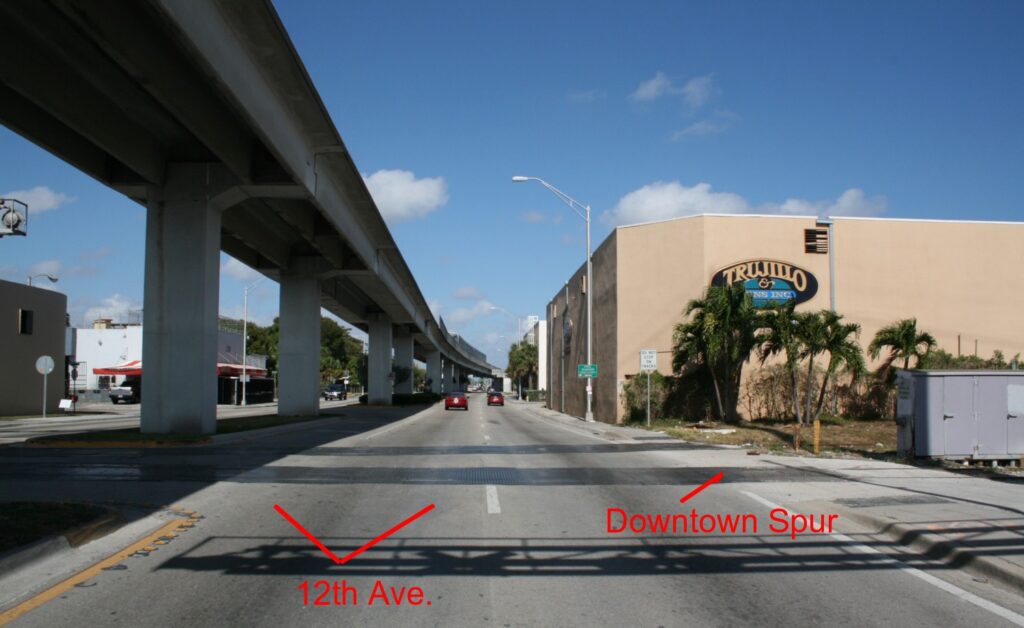
A key scene on The Downtown Spur is the point where the line crosses 12th Avenue. A major element is the Metrorail line running overhead. However, just because it’s there, should we model it?
My next book will be “Realism Principles For Model Railroaders”. Give me four to six months to get it on the shelves. Throwing a spoiler alert out there, it’s not going to go in the direction you might expect. Here’s one example. It’s counterintuitive, but there is tremendous power in strategic omission. That is, intentionally leaving something out. It’s odd, but the concept is one of “not” doing something to improve your results. Looked at another way I’d call it, “not shooting yourself in the foot”.
Prototype modelers have a tendency to fall into a subtle trap of what I call the “placeholder approach”. We look at a scene, make note of the elements in that scene, and then dutifully try to represent them tit for tat. It sounds reasonable but let’s think it through for a second. Three problems commonly come up. First, a high quality casting for that part may not be on the market. Putting a soap carving on the layout just because Tichy or Alkem doesn’t make what we need is, in fact, shooting yourself in the foot. You’re just checking a box on a laundry list. Second, we may not have the skill to pull it off. For example, there may be very prominent graffiti in the scene but graffiti can be very difficult to model. Finally, the geometry of the element may not lend itself to being represented in model form. A common example is elevated features, such as roads or mass transit lines, running into the backdrop.

Here’s a mockup of the 12th Avenue Metrorail scene on the layout. The point where it meets the backdrop is a total visual nightmare. I made the strategic decision to exclude it from the layout. Just because you can, doesn’t mean you should.
I intend to allocate an entire chapter of the book on developing an awareness of visual landmines so that you can make strategic decisions as to whether you are better off just not trying to model them. Once again, the old adage is “no detail is better than a bad detail”. Stay tuned.
“Art is a lie that makes us realize truth”
Oh, I dunno…I kind of like the way the elevated metro rail looks in the mock-up.
Jim
Here’s my take.
The point where it hits the backdrop is never going to work. Agreed. If that alone would bother you then I agree leave it out. However, you could have some cool photo/video opportunities under the overpass without ever showing the backdrop portion on film. I guess the question would be is it worth the work to build for those video/photo ops? I mean the overpass could easily be removable too.
I left out a road crossing adjacent to the station of the junction I’m modeling. It would have run straight in to the backdrop and I was tight for space. The other elements give your eyes enough to look at so you don’t notice the omission.
Interesting insights Lance. Personally I’ve always found overhead passes, like you’ve demonstrated here, visually jarring as they tend to just hang in space somewhat unconnected from the rest of the scene. In some ways it kind of destroys the illusion for me. Just my personal opinion and others may disagree.